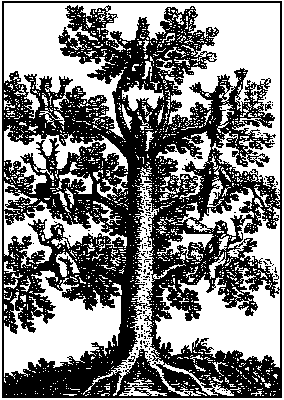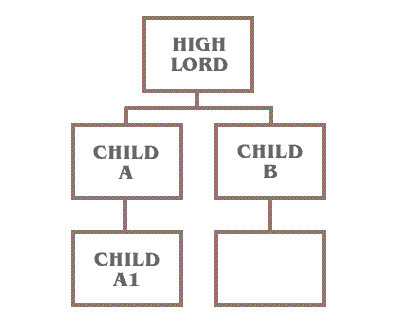|
The World of Teréth End - Supplements |
||||
|
"A song in your heart Inscribed on steps of Paldan Conservatory |
Book of Peerages Dekàlan Peerage
Merit was the only chance commoners had of earning titles and land. Most commonly, merit could be earned on the battlefield, a place where many commoners participated but very few excelled. Those that distinguished themselves were sometimes granted yeoman status, earning land and some liberties by serving in the lord's military four months each year. Yeomen might also be chosen by their lord to serve the High Lord, thus fulfilling some of the lord's obligation to the local throne. Once a member of the High Lord's military, there was more opportunity to be noticed and perhaps further distinguished. In over a thousand years of Dekàlan rule, only a handful of people climbed the ladder from serf to knight. In most instances, the climb toko place over the course of several generations. The most common means of gaining power in Dekàlas, was through lineage (right of birth). A High Lord's children, barring serious religious or political upheaval, had good chances of becoming the next high rulers of their city-state. All children of a lord (high or common) are groomed for rulership in the Dekàlan system. Dekàlan royalty trace their heritage through their eldest children whether male or female. The eldest living child of the predecessor's generation is the inheritor of the throne. If the heir-apparent dies before coronation, the crown is passed to the next eldest sibling of the heir-apparent, before descending to the next generation.
Example Two: A High Lord has one child, Child A. Child A is heir apparent. Child A has a child, Child A1. Child A1 is heir presumptive because if the High Lord has a second child, Child B, then Child A1 is no longer in immediate contention for the crown. The throne may only be granted to those that share the preceeding monarch's surname. In the royal class, the higher ranking person's surname (determination of which can require research of several generations) is given to children of the marriage regardless of the ranking parent's gender. The daughter of a High Lord therefore will retain her surname and pass it on to her children. The only exception to this would be if the High Lord's daughter marries the child of the High King. The royal surname passes from the family line once it becomes impossible for that line to be crowned (first cousin of "controlling family"), children of said persons typical are given the surname of the next highest ranking surname from preceeding generations, usually the maiden name of a mother or grandmother. In some locations, the prefix "Sur" (sur = previously) is added to the royal surname indicating the passage of eligibility. i.e. Zyan becomes Surzyan. The "Sur" prefix is applied in lieu of the adoption of a maternal name. Usage of the "Sur" prefix was more common in Dekàlan times. Subinfeudation: There are many layers within Dekàlan system of nobility. The lowest tier of the peerage are Barons. A Baron is a low-common lord that holds land for a High Baron or Lord. High Barons hold baronies for a Lord, which in turn hold high baronies for the High Lord, who is the ultimate landholder within a city-state. With regard to land, the High King acts as a High Lord of Lanàdus and is not considered to control the lands of city-states. City-states owed taxes and sent soldiers for the High King when required. Knights are not necessarily land holders. Knighthood is a military position that exists outside the ranks of nobility. Many barons and lords are knighted, but this has little direct impact on their holdings. Knighthood may however, offer a lord a chance to serve his or her lord in lieu of a year's monetary obligation, much like a yeoman except service is measured in half-years. A knight's lord may request one or the other, but not both without some sincere promise of commensurate restitution to the knight or his holding. Landless knights therefore are often employed as soldiers.
|
Houses of the Jun Kàrdam (Aza -653) Supplements Art |
||
|
Ref. PHB (Player's Handbook), © Wizards of the Coast  |
||||
 Power
within ancient Dekàlas was derived in two ways, merit and lineage.
Power
within ancient Dekàlas was derived in two ways, merit and lineage.
